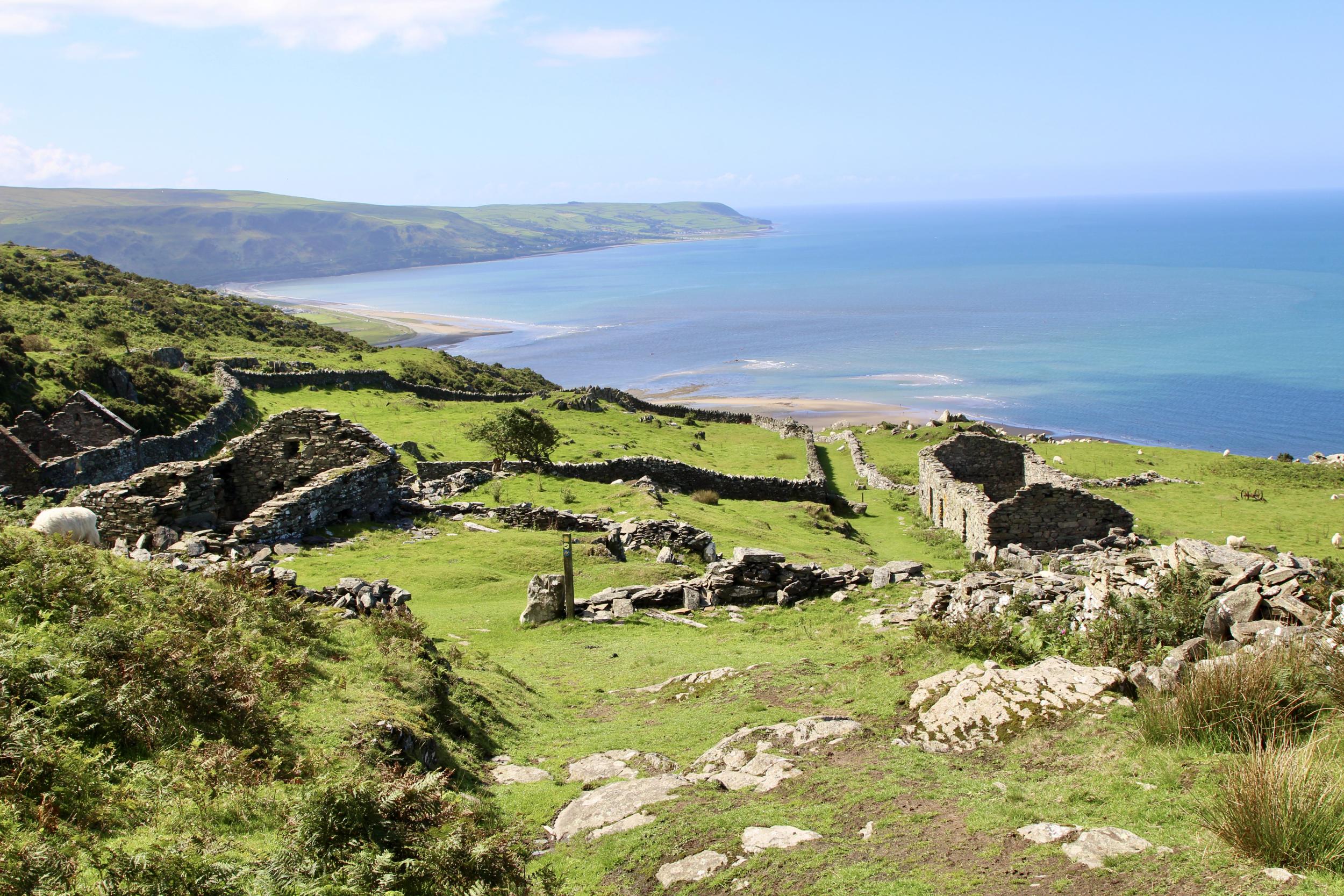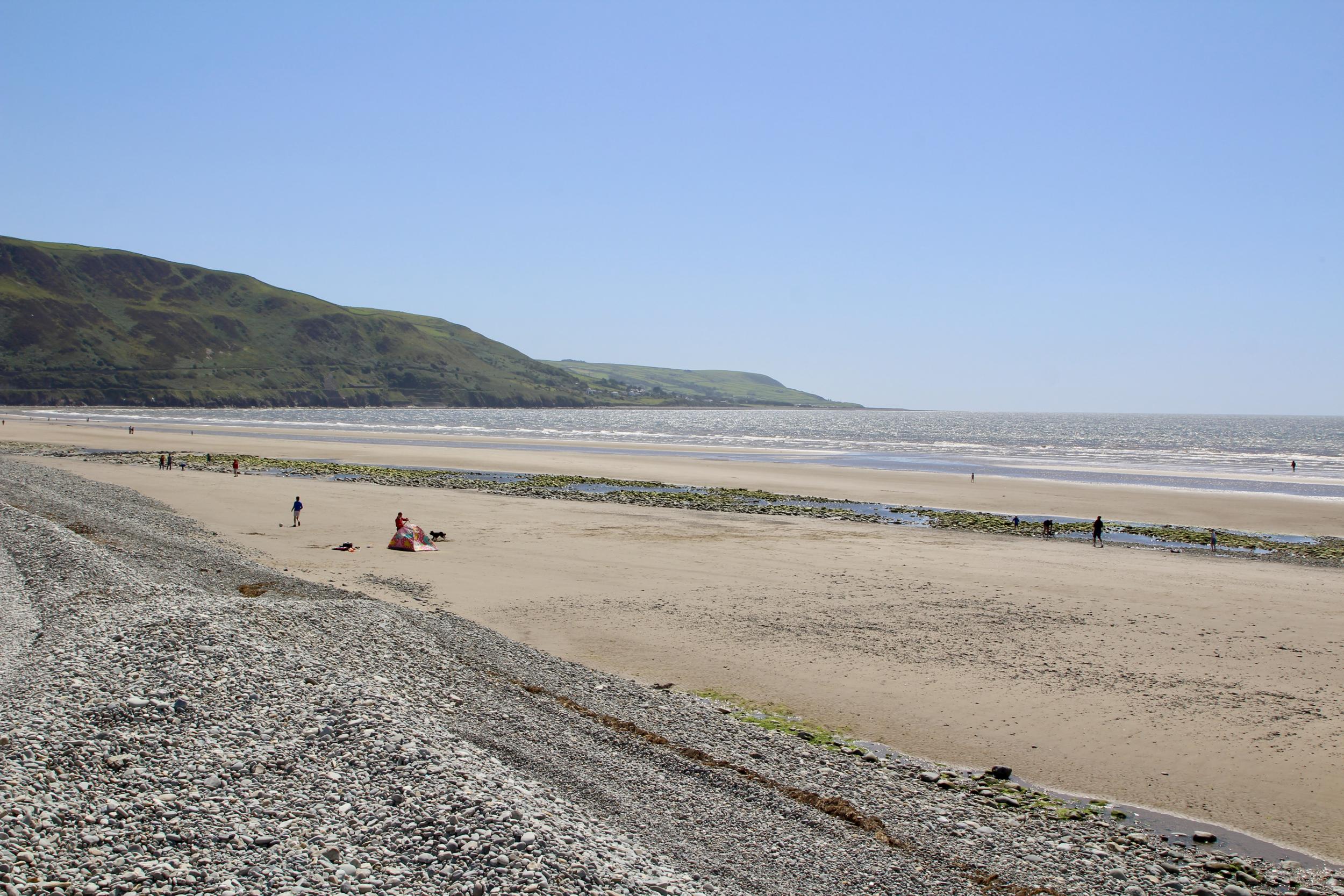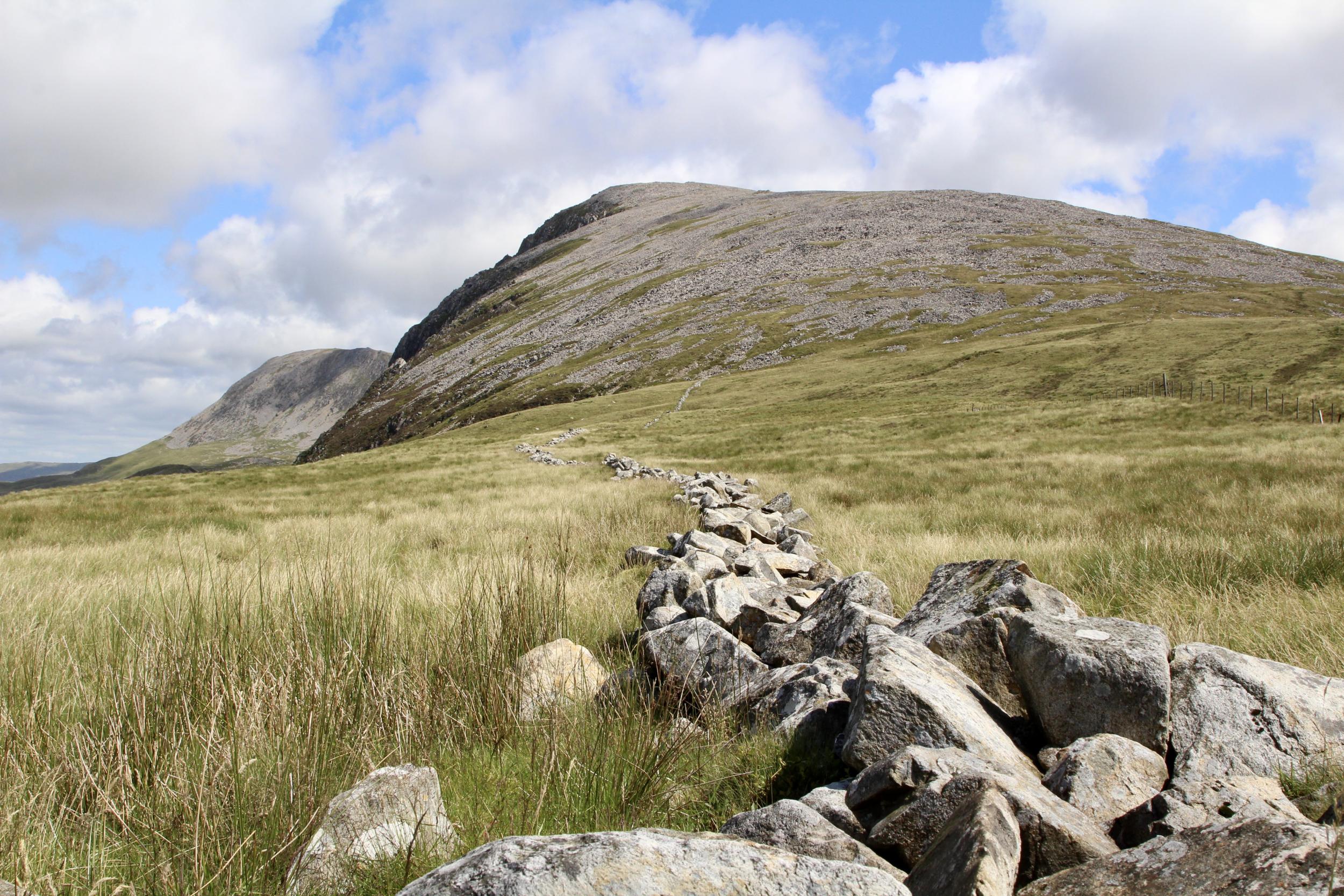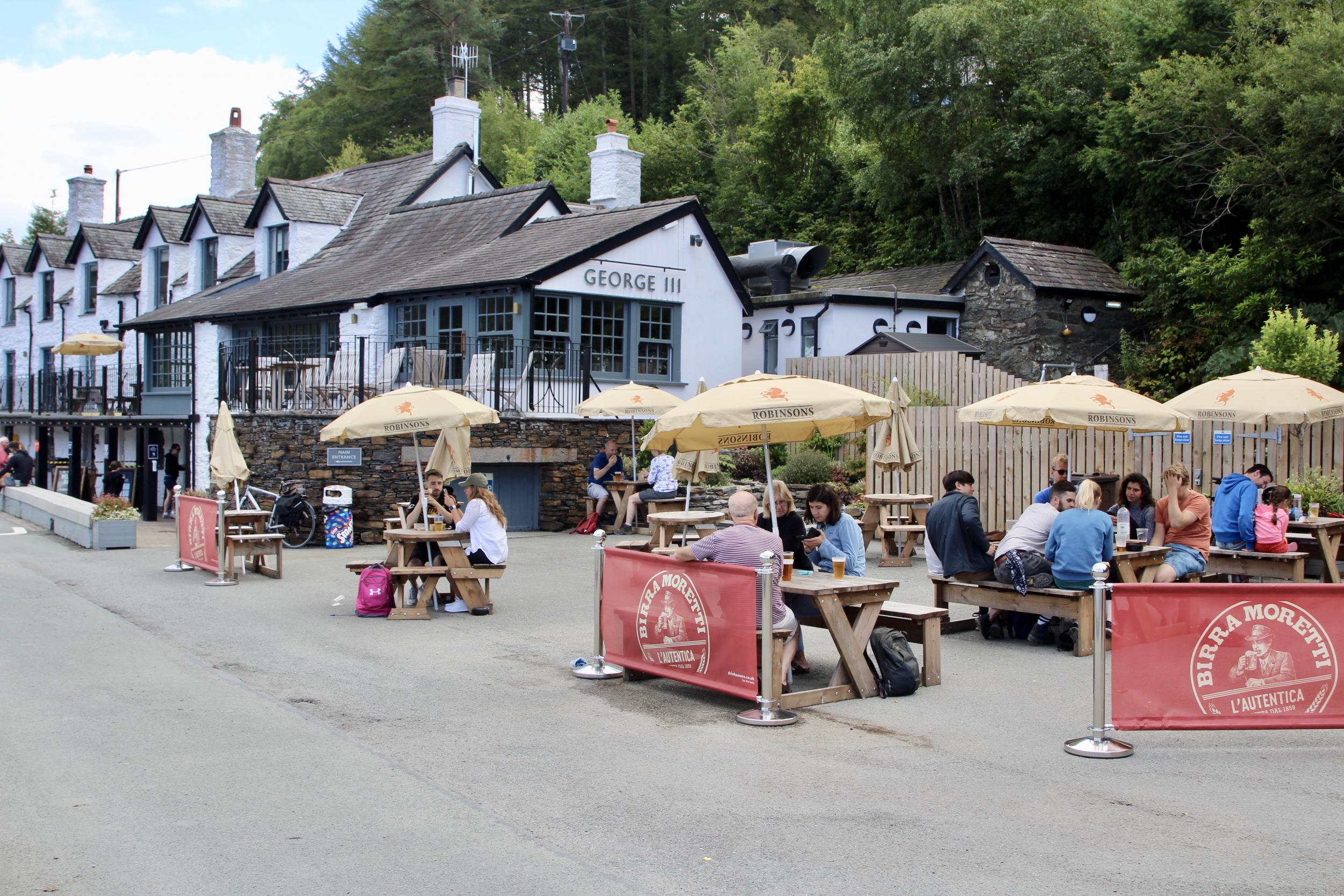Why tourists should head back to Wales for their next staycation
Despite the post-pandemic measures, North Wales retains its charm, finds Joey Tyson

A group of drinkers huddle under a temporary marquee outside The Unicorn pub, sheltering from the driving rain. It’s the first weekend since lockdown began that Wales is open to tourists, and, in true British holiday spirit, it’s absolutely chucking it down.
Not that it seems to bother anyone in Dolgellau, North Wales. Since 13 July, pubs, cafes and restaurants with ‘outside space’ have been allowed to serve food and drink, and people are making the most of it – even if it means getting a bit wet in a repurposed car park.
Llinos Rowlands, owner of Gwin Dylanwad Wine, a bar and wine shop which shares the makeshift outdoor space with The Unicorn, is just happy to see people back in Wales – whatever the weather. “We couldn’t survive without tourism. I’d say that maybe 40 per cent of the people that come are visitors,” she says. As I sit drinking coffee at one of Llinos’ small blue tables, it feels nice to finally be a tourist again. Although it almost didn’t happen.
When it was announced that Wales would open to tourists from 11 July, we deliberated the trip at length. After four months of lockdown, walking the same trails close to home, staring at the same four walls, day in day out, we definitely needed it, and a self-catered cottage (booked pre-Covid) offered up the chance of a break in a place we knew well: escapism with a reassuring dose of familiarity.
But we were wary, too. Would a holiday dominated by anxious social distancing be any fun? Would anything be open? And would we even be welcome? Turns out we needn’t have worried. Even a global pandemic can’t freeze the warmth off a Welsh croeso.
Dolgellau is probably the ideal place for a post lock down staycation. Sitting on the southern edge of Snowdonia National Park, at the bottom of the Cader Idris mountain range, it is surrounded by rolling hills, mighty peaks, and a long strip of wide, sandy coastline. Walking trails trace through miles of sleepy countryside, up mountain passes and around deserted lakes; apart from the odd sheep, you can go for hours without coming within a hundred yards of another person, let alone two metres.
The town itself is a pretty jumble of old grey stone houses with slate roofs. A single main road weaves through the old centre, little alleys and lanes winding here and there. Ancient cottages cling to the roadside, their names proudly written in Welsh.
Luckily, after a wet start to the weekend, the sun appears and never really leaves. With it, Dolgellau gratefully reinvents itself into an al fresco experience. Cafes and pubs squeeze tables onto every available inch of space – pavements, alley ways and car parks spill with people eating and drinking in the glorious Welsh sunshine. Despite Dolgellau’s obvious lack of space, there’s a relaxed, continental atmosphere, which, dare I say it, feels like a new normal here.

That afternoon we set off to conquer Cader Idris, the 893m-high mountain that looms over Dolgellau and the surrounding area. From the bottom, its dramatic rock wall resembles a miniature version of Yosemite’s iconic El Capitan. The trek up Cader is the highlight of Southern Snowdonia, and far less busy than the famous Mount Snowden to the north. From the summit, the views stretch out over the endless jagged peaks of the national park, over the hills and valleys of central Wales, and out to the Irish Sea in the west. Besides a steady trickle of other hikers, the mountain is calm and quiet.

For dinner, we book a table at Tafarn Y Gader, a popular Northern Spanish tapas place with a large, covered garden. It’s one of the few restaurants in town that has the space to open in the evening, and although he can only serve a fraction of his usual customers, owner Asier Caldo is just glad to be open again. “It’s been great to have people back but with the two-metres, we can only feed around 14 people, so we’re doing two sittings, plus takeaways in between,” he explains. Asier plans to keep the takeout service going until 3 August, when he’s hopeful he’ll be allowed to seat people inside again.
It’s a similar story at The George III, a historic hotel and pub on the banks of the river Mawddach, the following day. Popular with walkers and cyclists, the pub has introduced a one-way system through the bar and converted its car park into a temporary beer garden to meet the Welsh government’s Covid-19 regulations. Slowly but surely, business is picking up, and the new rules seem to be working, says manager Leo Baldwin. “It’s been steady, but everyone’s reacted really well to the new measures”.

No doubt, things are different in Wales – as they are all over the world – but the country’s best bits remain mostly as they always have. That morning, we took the spectacular Panorama Walk around the cliffs above seaside town Barmouth. As we trekked through ancient grazing fields, hemmed in haphazardly by stone walls, and past the crumbling ruins of an old hamlet, we had the wide-screen sea views to ourselves. Everything was overgrown, coated in bright lichen and moss; sheep grazed where they fancied. A blue “Thank you NHS!” flag fluttering above a rocky outcrop, the only reminder of our new reality.
Of course, the presence of Covid-19 still hangs heavy over everything. In the shops, one-way systems and Perspex screens are the norm. Hand sanitizer is a constant feature, track-and-trace measures are in full swing, and two-metre “keep your distance” signs hang from lampposts and windows. There’s a feeling that Wales, which has re-opened at a steadier pace than England, wants to get this right first time. Understandably, they’re taking it slowly. The main thing is that it feels safe. And at points – stood at the top of a mountain, or vigilantly guarding your chips from the crafty seagull circling above a windswept beach – the weird bits don’t seem to matter that much, anyway.
Join our commenting forum
Join thought-provoking conversations, follow other Independent readers and see their replies
Comments